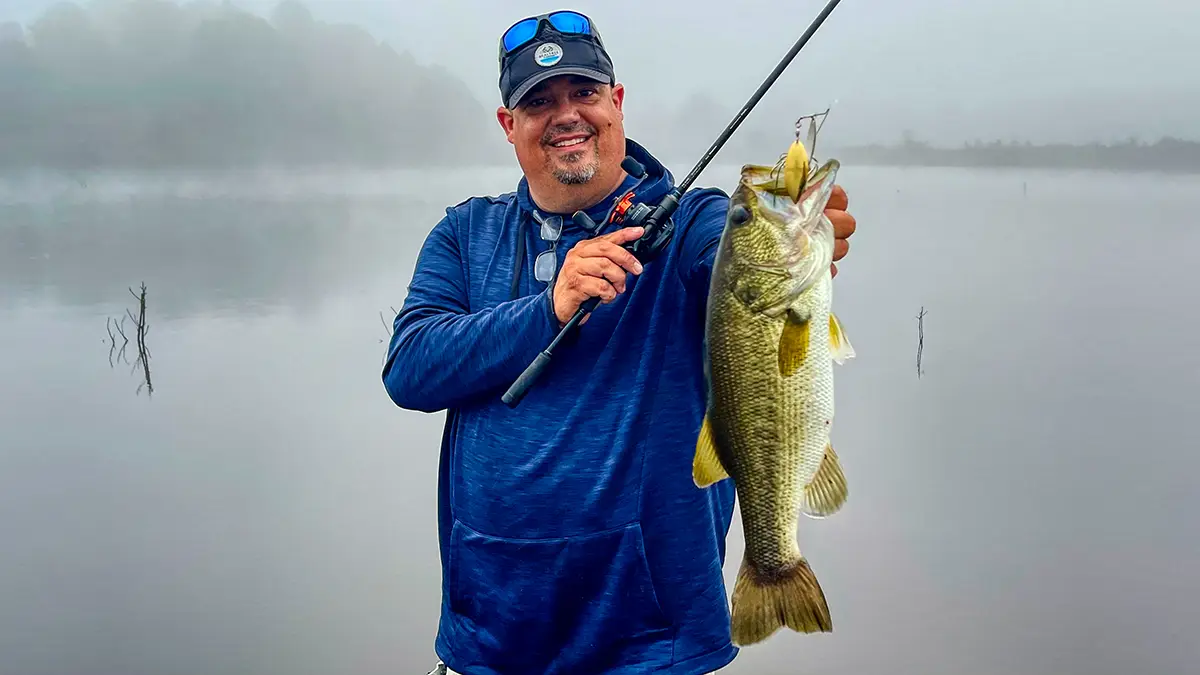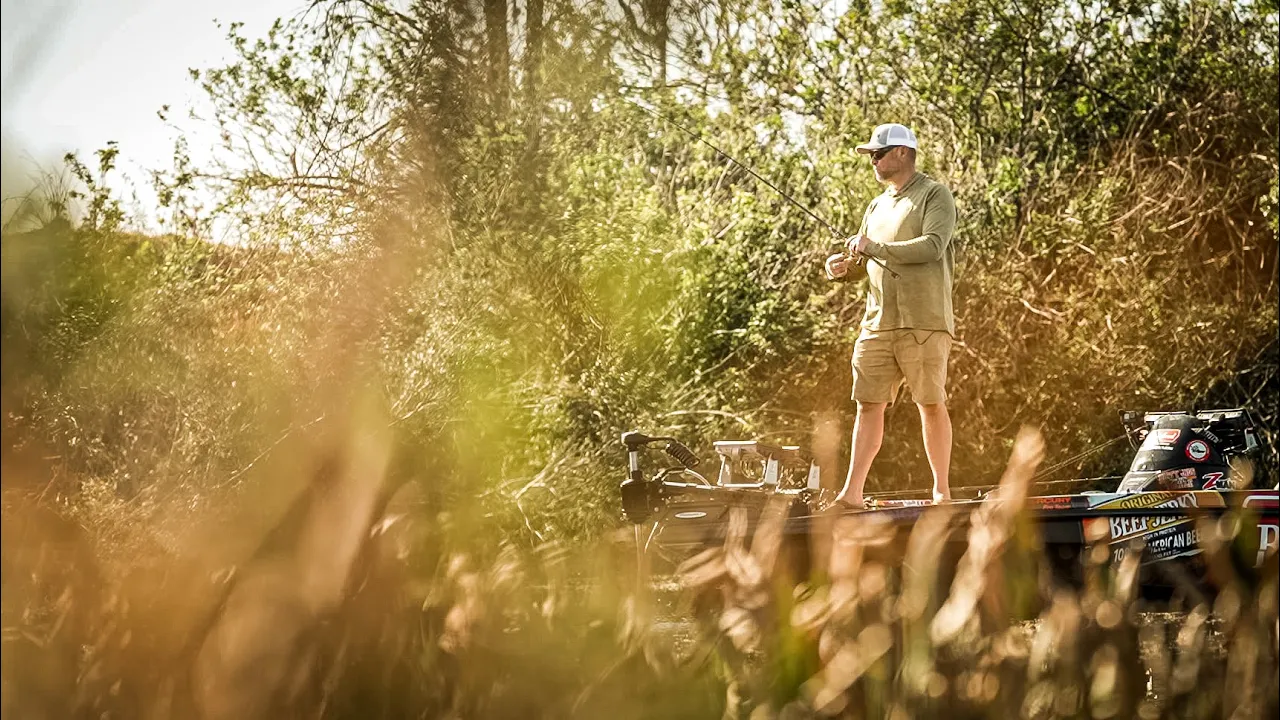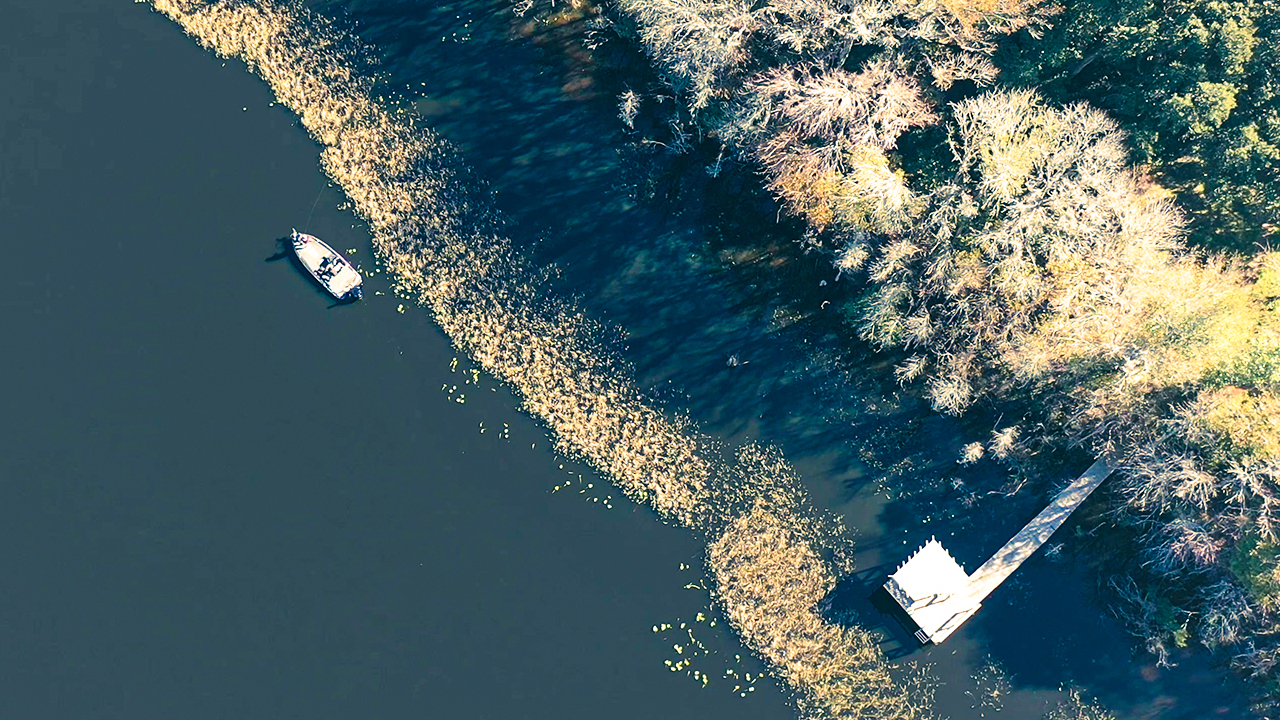Most anglers will agree that your fishing line is the most important part of your fishing gear but the fishing hook is definitely a close second. Not only a good hook, but more importantly the right hook for what you are fishing for and what you are fishing with for bait will yield a lot more positive results on your fishing trips.
There are lots of great fishing hooks on the market, but having the right size and style for the artificial or live bait you are using and that will hold up to the fish you intend to catch matters the most. And sometimes a surprise catch might not work out on the hook you’re using, but that is part of what keeps us coming back.
This guide will shed light on what hooks are best for what and what sizes there are to choose from. Our hope is that after you read this, you will get the right hooks that will help you catch a lot more fish every time you go without much fuss or expense.

Parts of a Fishing Hook
We’ll reference a lot of different parts of the fishing hook throughout, so this illustration above will give you a good idea of what we’re referring to when talking fishing hooks. There are other terms that are interchanged, but this is the common knowledge stuff that will help you pick the right fishing hooks.
Fishing Hook Types
We’ll basically be looking at the 5 major categories of hooks and then specific hooks under those to cover most of anglers needs in fishing. The following main categories of fishing hooks cover just about all of the bases in freshwater fishing:
- Bait Hooks
- Inline Hooks
- Worm Hooks
- Treble Hooks
- Combination Hooks
Let’s take a look at the hooks in each category.

Bait Hooks
Few different hooks are classified as bait hooks. These hooks are designed to be fished with live bait like worms, crickets, minnows, cut bait and more. They include the following hooks:
- Bait Holder Hooks
- Aberdeen Hooks
- Mosquito Hooks
- Circle Hooks
Bait Holder Hooks are short shank hooks, a little thicker in diameter compared to their size and are used for hooking various types of live bait including but not limited to minnows, crickets, worms, leaches and more. If you are chasing small fish like panfish sizes No.6 and No. 8 make sense. If you’re chasing bass, walleye, catfish. Sizes closer to size No.1 or 1/0 make more sense for larger minnows like shiners. Some bait hooks are designed to be snelled and some even come pre-snelled to just tie onto another rig.
Aberdeen hooks are generally long shank with a narrow gap and very light wire. These hooks are great for fishing for smaller fish like panfish and using live bait like worms, crickets and minnows. We generally stick with No. 8 up to No. 1 size hooks for most of our fishing. Bluegills with worms and crickets we usually use a No. 6. Minnows for crappie, we will use a No. 2 or No. 1.
Mosquito hooks are great for fishing smaller baits like small minnows and even worms. They have become extremely popular with drop shot anglers as they work very well for nose-hooking small plastics on a drop shot rig. The tiny hook hooks bass well in the nose and you lose very few fish on a drop shot mosquito rig. We match the hook size to the thickness of the bait we will be fishing.
Circle hooks have been popular for quite some time with saltwater fishermen because their design allows the hook to rotate and hook fish with just pressure. And then you are able to just roll the hook back out when you go to unhook fish. It has made hooking and unhooking large game fish a lot easier. Likewise circle hooks have become very popular with catfishermen. These stout hooks hold cut bait well and hook and hold catfish very well. You can tell them by their thicker gauge wire and the curled hook point.
Related read: Best Catfish Hooks

Inline Hooks
Inline hooks generally refer to hooks you add to fishing lures to increase or make the hooking and unhooking of fish. The original inline hooks were the flat-eyed long shank hooks you saw guys putting on spinnerbaits as a trailer hook with a bit of surgical tubing to hold it in place.
But in recent year straight eye inline hooks have become very popular both in saltwater and freshwater to replace treble hooks and make hooking and unhooking fish a lot easier while making the lures themselves a lot more snag less. We have experimented a bit with these hooks with bait finesse fishing the last year and really like these hooks on hard lures now.

Worm Hooks
Basically you have three types of hooks classified as worm hooks or hooks for rigging soft plastics. The following are the four types of soft plastic worm hooks:
- Straight Shank Hooks
- Offset Worm Hook
- EWG Worm Hook
- Neko Hooks
Straight Shank Hooks feature a long straight shank, a moderate gap and usually some barbs or a keeper of some sort up near the eye that holds your plastic in place. These hooks are intended to be Texas rigged and work very well in punch and flipping presentations. If you snell a straight shank hook, you can create a lever action that also helps hook fish in cover.
Neko hooks came into the mix a few years back and the original hooks that started the craze were actually trout hooks that a few pros were using because you got a better pull point with the worm sitting the way it does off to the side of the hook on a Neko rig. After that many companies started mass producing this newer shorter straight shank with the unique O’Shaughnessy bend hooks for Neko rigging. The better ones now have a hook guard on them to so you can fish them near cover.

Offset Worm Hooks may be the most popular of fishing hooks, largely because bass fishing is the most popular type of fishing. And a simple round-bend offset worm hook is nothing more than a straight shank with an elbow added to hold a Texas-rigged plastic a lot better while keeping the hook point nicely tucked away. Once you learn to rig a Texas rig, you will want a bunch of offset worm hooks. We like a 4/0 or 5/0 worm hook for most bass fishing plastics.
Offset EWG Worm Hooks give you a lot more gap and bite to get through a lot more plastic and still good a good hook in a fish. These became a lot more popular with the explosion of creature baits and swimbaits into the fishing market. The wider gap allows you to rig bigger plastics weedless and still have room for the bait to collapse so you can get a good hookset.

Treble Hooks
Treble hooks make up for the rest of the most popular fishing hooks. They are used from live bait fishing to artificial lure fishing. They give anglers a lot more opportunity to hookup with fish and come a wide range of sizes to fit various sized artificial lures and types of fish you might pursue.
We have crankbaits that have small No. 8 trebles and swimbaits that have 2/0 EWG Treble hooks. So it’s all relative the bait you will use. The big determining factor on treble hooks is wire gauge, hook gap, and shank length. Short Shank EWG treble hooks have become popular with crankbait anglers in recent years as they snag less and are harder for fish to throw. Round bend trebles are popular with topwater baits where fish just slash at a bait.
A thicker wire gauge treble hook is desired when fishing for big fish. A lighter gauge will bend out easier under load. So if you are going for big bass or other big fish, make sure you use a 2X to 4X gauge hook.

Combination Hooks
Combination hooks feature all of the hooks that don’t fit nicely into one category because they are blend of multiple categories of hooks or they have accessories added to them or are modified to present baits a little easier or better to the fish. Some examples of Combination hooks would be the following:
- Tokyo Rig Hooks
- Weighted Swimbait Hooks
- Assist Hooks
Tokyo rig hooks have their own wire dropper for adding weight to the hook connected by split rings and swivels. They allow anglers to present plastics more horizontal to the fish.
Weighted swimbait hooks have lead molded onto an EWG hook usually with a screw lock keep to belly weight a swimbait so it will sink and swim more naturally than on a jig head for example with all the weight in the front.
Assist hooks are hooks tied to a braided cord that is usually added to things like large flutter spoons or even swimbaits. These hooks offer another hook to snag fish with lures that have wild and violent actions imparted on them where fish will slash and miss a lot. They basically “assist” in hooking fish.

Fishing Hook Size Chart
So you basically need to know two things to understand hook sizes. First hooks are measured in either Number or Aught size. And the size of the hook in these two nomenclatures is conversely related. In other words a No. 1 hook is a lot larger than a No. 8 hook, but a 1/0 is a lot smaller than an 8/0 hook.
Generally speaking you want to use smaller hooks for smaller fish. You might want an 8/0 circle hook for giant blue cats but you will only want a No. 6 Aberdeen for chasing bluegill. Usually the bigger the hook the larger the size of wire the hook is made out of. A small No. 6 Aberdeen will penetrate with very little pressure, but a 5/0 swimbait hook will really have to be driven hard to stick a fish solidly.
Top Fishing Hook Brands
Like we said earlier, a lot of great hook manufacturers keep the market flooded with really good hooks. But it’s probably worth listing a few of the top brands so you know you are getting good hooks when you buy their hooks.
Here are a handful of the hook brands we recommend:
- VMC
- Gamakatsu
- BKK
- Eagle Claw
- Lazer Trokar
- Mustad
- Owner
- Berkley Fusion
- Hayabusa
- Ichikawa
- Decoy
Favorite Fishing Hooks
Here’s just a few of our favorite fishing hooks that we use a lot for bass fishing.
- VMC Redline Series
- Eagle Claw Lazer Sharp Tube Hook
- Owner Stinger Treble Hooks 3X ST-56
- Mustad KVD 1x Strong 2x Short Triple Grip Treble Hook
- Owner Weighted Beast Hook
- BKK Chimera
- Lazer Trokar Drop Shot
- Berkley Fusion19 Hooks Offset Worm

















